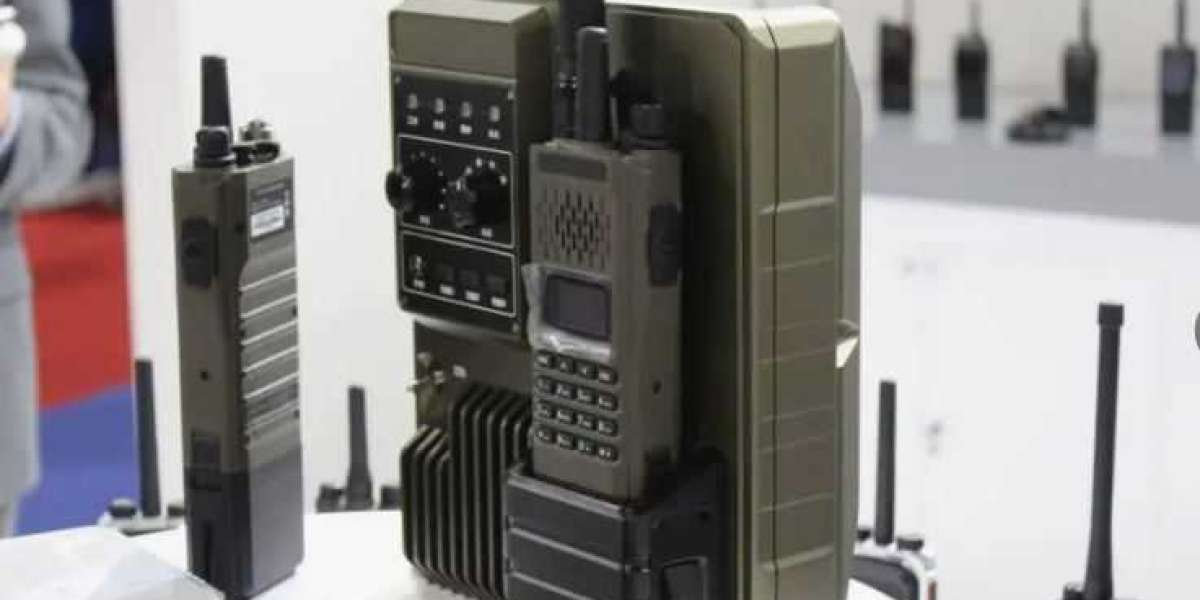The Tactical Communication Market is witnessing strong growth as the demand for secure, high-quality, and real-time information exchange increases in critical operations. Ranging from military and law enforcement to emergency response teams, the demand for cutting-edge communication technology is making a beeline. This blog is an analysis of the dynamics of the Tactical Communication Market, with an examination of its present state, future outlook, and the market-driven strategies influencing its direction.
In the intricate operational spaces of the present, effortless communication is essential. Instant access to voice, data, and video between remote teams is no longer an indulgence but a prerequisite for mission accomplishment and soldier safety. This underlying need propels the growth of the Tactical Communication Market.
Market Size and Growth Trajectory:
The market is experiencing tremendous growth. The Tactical Communication Market size is expected to grow significantly, reaching US$ 34.36 billion in 2031 at a Compound Annual Growth Rate (CAGR) of 7.6% from 2023 to 2031. This growth has been supported by ongoing technological developments and mounting security challenges across the globe.
Key Drivers Propelling Market Growth:
Some drivers are driving the rapid growth of the Tactical Communication Market:
- Geopolitical Unrest and Security Threats on the Rise: Growing worldwide tensions and the demand for improved security controls are fueling investment in next-generation tactical communication systems. Governments and defense communities are giving top priority to secure and reliable communication systems.
- Technological Innovation: Developments in fields such as Software-Defined Radios (SDR), mobile ad-hoc networks (MANETs), satellite communications, and IP-based communication are transforming tactical communication capacity. These technologies provide greater interoperability, bandwidth, and security.
- Need for Situational Awareness: Contemporary tactical operations need wide situational awareness. Advanced communication systems allow for real-time sharing of key intelligence, imagery, and sensor data, leading to improved decision-making.
- Focus on Interoperability: The imperative of smooth communication among various units and agencies, which are mostly working on different systems, is compelling the adoption of interoperable tactical communication systems.
- Rise in Adoption of Digitalization within Military and Public Safety: Rising digitalization within defense and public safety forces demands a strong and secure digital communication infrastructure.
Key Trends:
- Cybersecurity Focus: As more emphasis is placed on digital communication, cybersecurity has become a top issue. The industry is seeing rising demand for communication systems that have strong encryption and anti-jamming features.
- Artificial Intelligence (AI) and Machine Learning (ML) Integration: AI and ML are being integrated into tactical communications to improve data analysis, enhance network management, and offer predictive capabilities.
- Next-Generation Network Development: Next-generation network evolution with greater resilience, higher bandwidth, and lower latency tactical networks is in full swing. This encompasses the transition to 5G and beyond technology.
- Miniaturization and Portability: Miniature and lightweight communication equipment with high performance and user-friendly design is increasingly in demand for dismounted troops and first responders.
Market-Oriented Strategies for Success:
To be successful in the competitive Tactical Communication Market, firms must implement strategic methods:
- Emphasis on Innovation and Differentiation: Ongoing investment in research and development to provide state-of-the-art technologies and innovative solutions that meet changing user requirements.
- Establishing Strong Partnerships and Collaborations: Partnering with other technology providers, system integrators, and end-users to develop end-to-end and interoperable solutions.
- Understanding End-User Requirements: Undertaking extensive market research to comprehend the unique needs and challenges of various user segments (e.g., military branches, law enforcement agencies).
- Focusing on Security and Reliability: Focusing on the security aspects and reliability of their communication systems, as these are essential considerations for end-users.
- Offering Complete Support and Training: Providing strong after-sales support, training initiatives, and maintenance services to guarantee user satisfaction and long-term relationships.
- Adjusting to Regional Variations: Modifying products and strategies to address the unique regulatory needs and operational requirements of various geographic regions.
Conclusion:
The Tactical Communication Market is rich with growth opportunities fueled by the continually rising need for secure and effective communication in mission-critical operations. Companies can successfully capitalize on the growing Tactical Communication Market by concentrating on innovation, security, interoperability, and thorough knowledge of end-user needs. The future of tactical communication is in the efficient merging of state-of-the-art technologies to empower front-line troops with the data they require when they most need it.











